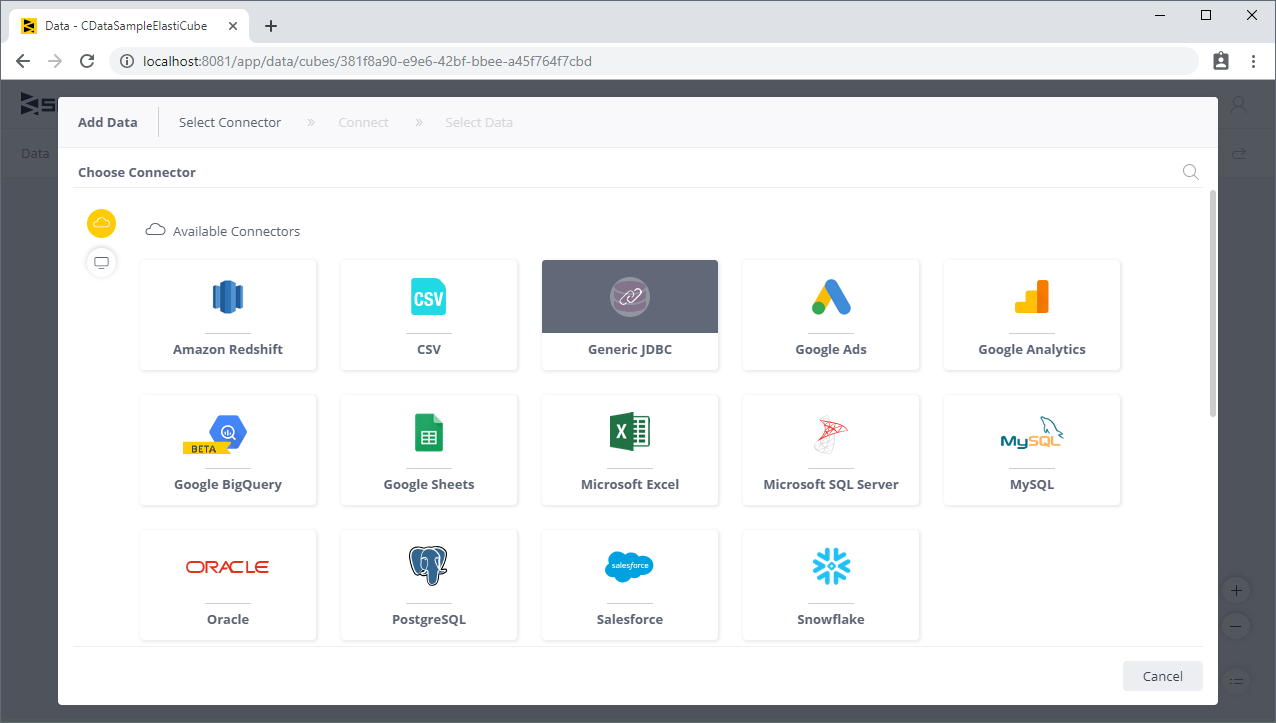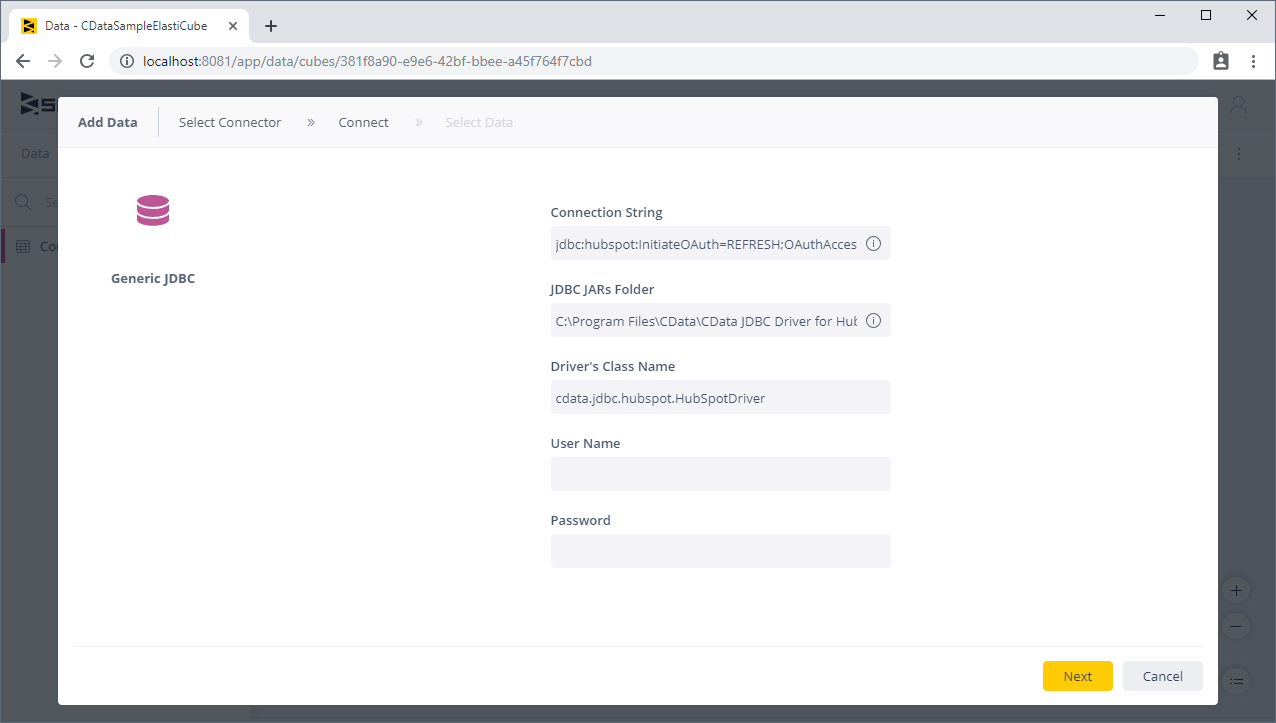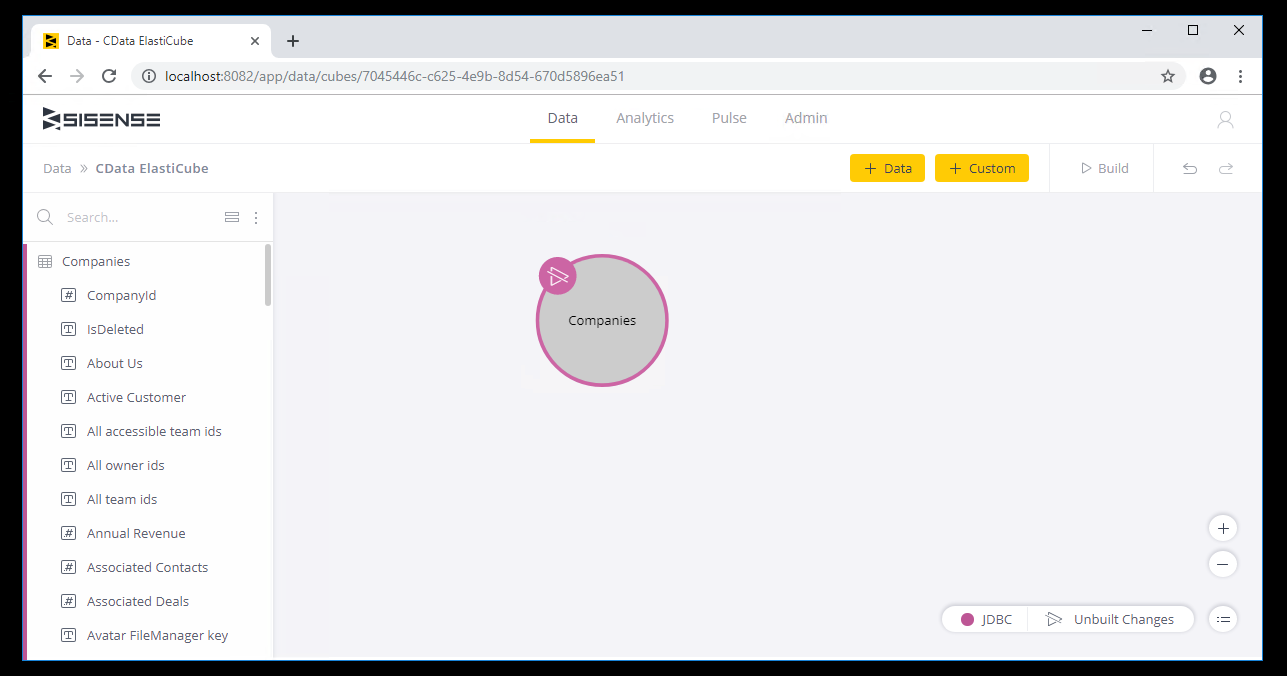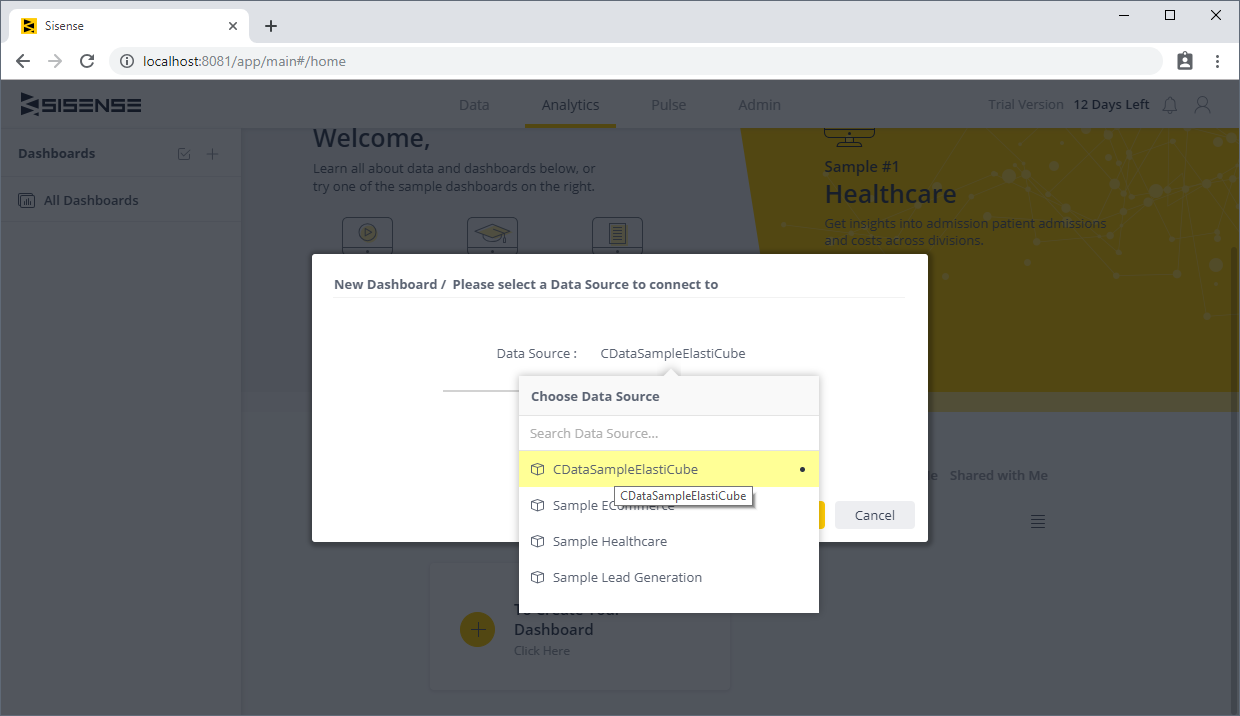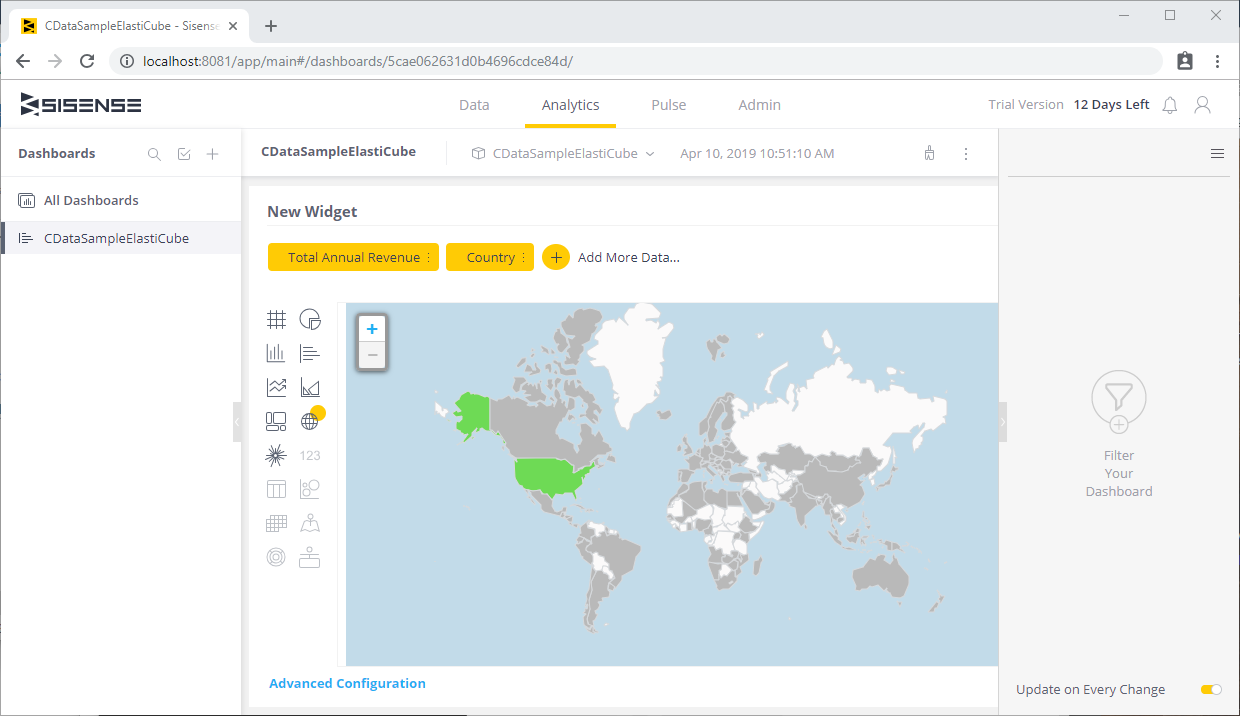Discover how a bimodal integration strategy can address the major data management challenges facing your organization today.
Get the Report →Visualize Oracle Service Cloud Data in Sisense
Create an ElastiCube in Sisense app with access to Oracle Service Cloud data.
Sisense lets you join, analyze, and picture data to make more intelligent business decisions and craft effective strategies. The CData JDBC Driver for Oracle Service Cloud makes it easy to integrate with Oracle Service Cloud data in Sisense. This article shows how to create an ElastiCube that connects to Oracle Service Cloud data and use the ElastiCube to visualize Oracle Service Cloud data in Sisense.
Configure the Connection to Oracle Service Cloud
Before creating the ElastiCube, note the installation location for the JAR file for the JDBC Driver (typically C:\Program Files\CData\CData JDBC Driver for Oracle Service Cloud 20XX\lib) or copy the jar file (cdata.jdbc.oracleservicecloud.OracleServiceCloud.jar) to a new folder in the Sisense JDBC driver directory (typically C:\ProgramData\Sisense\DataConnectors\jdbcdrivers).
- In the Data page of the Sisense application, create a new ElastiCube (or open an existing one).
- In the Model Editor, click "+ Data" to open the Add Data dialog box.
- Click Generic JDBC to open the JDBC settings.
![Connecting via JDBC]()
- Set the connection string property to the JDBC URL for Oracle Service Cloud, adding required properties.
Using Basic Authentication
You must set the following to authenticate to Oracle Service Cloud:
- Url: The Url of the account to connect to.
- User: The username of the authenticating account.
- Password: The password of the authenticating account.
Built-in Connection String Designer
For assistance in constructing the JDBC URL, use the connection string designer built into the Oracle Service Cloud JDBC Driver. Either double-click the JAR file or execute the jar file from the command-line.
java -jar cdata.jdbc.oracleservicecloud.jarFill in the connection properties and copy the connection string to the clipboard.
![Using the built-in connection string designer to generate a JDBC URL (Salesforce is shown.)]()
When you configure the JDBC URL, you may also want to set the Max Rows connection property. This will limit the number of rows returned, which is especially helpful for improving performance when designing reports and visualizations.
A typical example follows:
jdbc:oracleservicecloud:Url=https://abc.rightnowdemo.com;User=user;Password=password; - Set the JDBC JARs folder property to the location of the CData JDBC Driver JAR file (see above).
- Set the driver's class name to the class name for the JDBC Driver: cdata.jdbc.oracleservicecloud.OracleServiceCloudDriver
- Leave the username and password properties blank.
- Click Next.
![A configured connection in Sisense (HubSpot is shown).]()
Add Oracle Service Cloud Data to an ElastiCube
Once you are connected to Oracle Service Cloud, you can add tables and views to your ElastiCubes.
- From the Tables list, select the tables and/or views you wish to work with.
- (Optional) Click "+" to customize the data you want to import with SQL.
- Click Done.
![Selected tables to add to the ElastiCube]()
- Click Build to build the ElastiCube for analytics.
Visualize Oracle Service Cloud Data
With Oracle Service Cloud tables added to your ElastiCube, you can perform analytics on your Oracle Service Cloud data.
- Navigate to the Analytics page of the Sisense application
- Select a Dashboard (or create a new one)
- Select your Data Source and click Create
![Selecting the newly created ElastiCube]()
- Click "+ Select Data" and choose fields to add to your visualization.
![Visualizing data in Sisense (HubSpot is shown).]()
With the CData JDBC Driver for Oracle Service Cloud, you can access Oracle Service Cloud data right in Sisense for powerful visualization and analytics. Download a free, 30-day trial and start working with Oracle Service Cloud data in Sisense today!






